I am using netDXF (https://netdxf.codeplex.com/) to generate a DXF file for use with AutoCAD. However, I have an issue with getting the width of MText correct. I want to be able to define a width that the text should fit into, and change the width factor of the text (squash it horizontally) so that it fits in the defined area. So if I have a 40mm width to fit the text into and the text is 80mm long, it needs to have a width factor of 0.5. The only problem is that I don't know how to accurately determine the width of the text. I have tried the following methods and was unsuccessful in getting the correct result:
Why is Graphics.MeasureString() returning a higher than expected number?
Measure a String without using a Graphics object?
http://www.codeproject.com/Articles/2118/Bypass-Graphics-MeasureString-limitations
I have attached my code. I am basically printing a horizontal line using each of the 3 methods to calculate text width and comparing it to the actual text width. If I change the font, I get varying results. I have attached two images. One using the code with Calibri and one with Arial. I need the line to be on the edges of the text no matter what font I use.

 Here is my code:
Here is my code:
public void TestMethod1()
{
Application.SetCompatibleTextRenderingDefault(false);
//text width in mm
float textWidth = 40;
float textHeight = 200;
string labelText = "HELLO WORLD!";
TextStyle textStyle = new TextStyle("Calibri");
DxfDocument dxf = new DxfDocument();
Layer layer1 = new Layer("layer1");
layer1.Color = new AciColor(0, 0, 255);
layer1.Name = "Text";
MText text1 = new MText(new Vector2(0, 0), textHeight, 0, textStyle);
text1.Layer = layer1;
text1.AttachmentPoint = MTextAttachmentPoint.MiddleCenter;
//Will the text fit in the bounds of the rectangle? If not change width factor so it does.
Font f = new Font(textStyle.FontName, textHeight);
Size size = TextRenderer.MeasureText(labelText, f);
SizeF sizeF = graphicsMeasureString(labelText, f);
int width = MeasureDisplayStringWidth(labelText, f);
float widthFactor = Math.Min(1, textWidth / sizeF.Width);
MTextFormattingOptions mtextOptions = new MTextFormattingOptions(text1.Style);
//mtextOptions.WidthFactor = widthFactor;
text1.Write(labelText, mtextOptions);
//Red, g.MeasureString
Line line1 = new Line(new Vector2(0 - sizeF.Width / 2, 0), new Vector2(0 + sizeF.Width / 2, 0));
line1.Color = new AciColor(255, 0, 0);
//Green, TextRenderer
Line line2 = new Line(new Vector2(0 - size.Width / 2, 5), new Vector2(0 + size.Width / 2, 5));
line2.Color = new AciColor(0, 255, 0);
//Yellow, MeasureDisplayStringWidth
Line line3 = new Line(new Vector2(0 - width / 2, -5), new Vector2(0 + width / 2, -5));
line3.Color = new AciColor(255, 255, 0);
dxf.AddEntity(text1);
dxf.AddEntity(line1);
dxf.AddEntity(line2);
dxf.AddEntity(line3);
dxf.Save("Text Width Test.dxf");
}
public SizeF graphicsMeasureString(string text, Font f)
{
Bitmap fakeImage = new Bitmap(1, 1);
Graphics g = Graphics.FromImage(fakeImage);
SizeF sizeF = g.MeasureString(text, f, new PointF(100, 0), StringFormat.GenericTypographic);
return sizeF;
}
public int MeasureDisplayStringWidth(string text, Font f)
{
Size size = TextRenderer.MeasureText(text, f);
Bitmap fakeImage = new Bitmap(1, 1);
Graphics g = Graphics.FromImage(fakeImage);
System.Drawing.StringFormat format = new System.Drawing.StringFormat();
System.Drawing.RectangleF rect = new System.Drawing.RectangleF(0, 0, 1000, 1000);
System.Drawing.CharacterRange[] ranges = { new System.Drawing.CharacterRange(0, text.Length) };
System.Drawing.Region[] regions = new System.Drawing.Region[1];
format.SetMeasurableCharacterRanges(ranges);
regions = g.MeasureCharacterRanges(text, f, rect, format);
rect = regions[0].GetBounds(g);
return (int)(rect.Right + 1.0f);
}